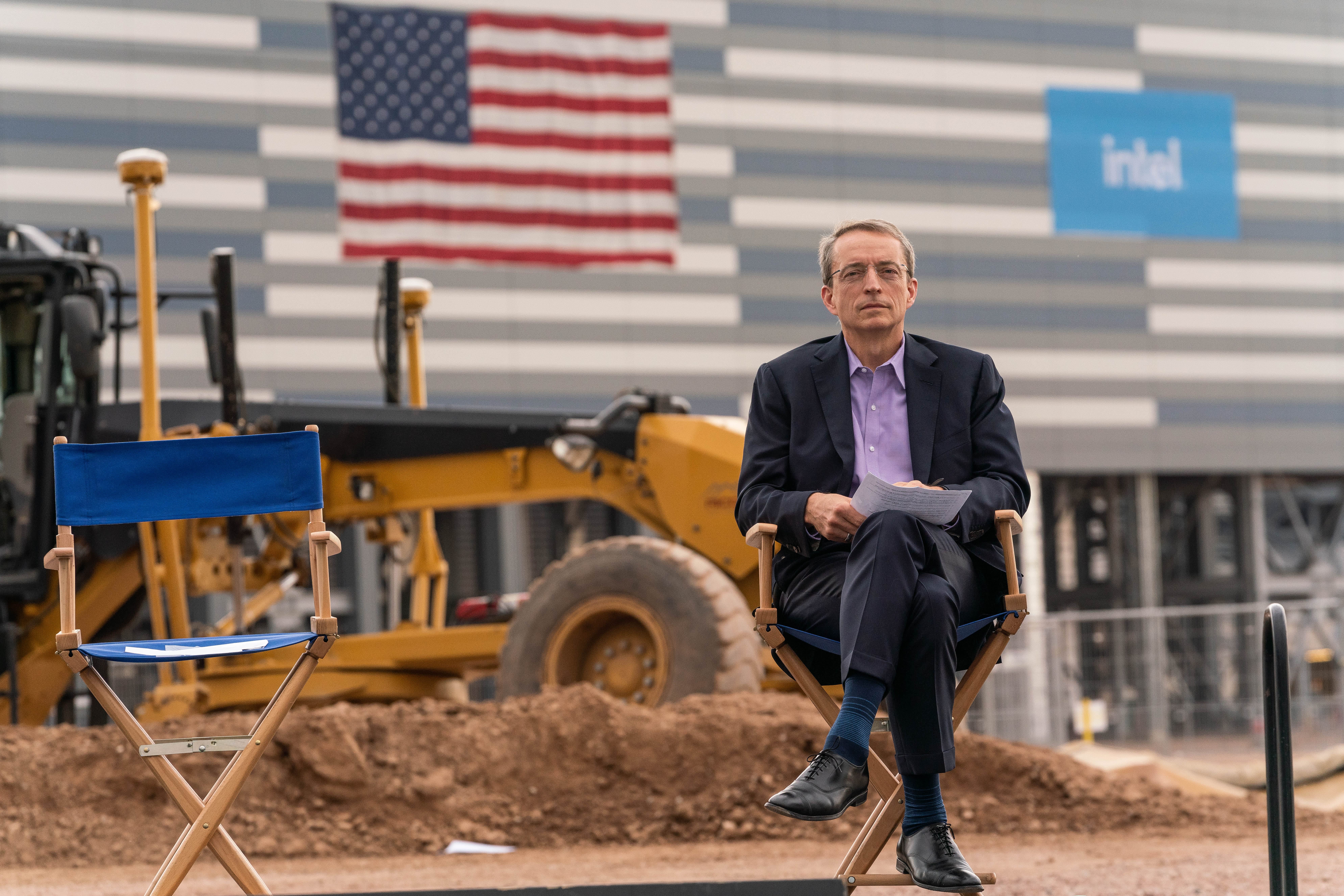
For decades, Intel was the leading maker of the world's most advanced chips. Of late, the company has been unable to keep up with the pace of change that co-founder Gordon Moore forecast for the technology industry.
Moore's Law predicted that the density of transistors able to fit on a chip would double approximately every two years.
"Intel was the Moore's Law company and the undisputed leader," said Christopher Rolland, an analyst at Susquehanna. "And something that was supposed to take them two years instead took them more than five. And they still struggle to get back on Moore's Law today."
While Intel's newly released Alder Lake CPUs are packed with competitive features, its chip technology is behind that of Taiwan Semiconductor Manufacturing Company (TSMC) and Samsung. Fifty years after Intel debuted the 4004, the world's first CPU, it's been hindered by several production delays.
"We had some missteps," said Pat Gelsinger, who took over as Intel's CEO in February. "The strategy had become a little bit confused on the role that we're going to play in manufacturing for the long term. And now we're leaning back into that with clarity, with clear urgency."
Gelsinger has an ambitious roadmap to catch and surpass Samsung and TSMC by 2025. Key to the plan is a series of massive new chip fabrication plants, or fabs, that Intel is building in the U.S., Europe and Israel. Combined, they will cost more than $44 billion to build.
"I think I have more concrete trucks working for me today than any other human on the planet," Gelsinger said. "We have construction in Oregon, New Mexico, Arizona, Ireland and Israel. And we expect to plant our next major fabs in the U.S. and Europe before the end of this year."
Doubling down on manufacturing is one of the major moves Gelsinger has made since taking the helm. He also recently announced Intel Foundry Services, a business that opens up Intel's fabs to make chips designed by Amazon, Qualcomm and other customers. For decades, the markets have rewarded giants like Apple and Qualcomm for being fabless. But the chip shortage has made manufacturing chips a more attractive business, allowing TSMC, for example, to raise chip prices as much as 20%.
"It takes time to build this infrastructure," said Keyvan Esfarjani, Intel's senior vice president of manufacturing, supply chain and operations. "But the good news is, the world is rallying behind building additional capacity."
The world's smallest and most-efficient chips are usually referred to as 5 nanometer, a nomenclature that once referred to the width of transistors on the chip. They power cutting-edge data processing and the latest generation of Apple iPhones. TSMC and Samsung make all of these 5-nanometer chips at fabs in Asia.
"They took their eye off the ball," said Stacy Rasgon, an analyst at Bernstein. "Once you fall off the treadmill, it's really really difficult to get back on. It's a very dynamic and fast-moving industry."
In 1990, 37% of the world's semiconductors were made in the U.S., according to industry association Semi. Last year, U.S. market share was down to 12%, according to the association. The government is hoping to change that with the CHIPS Act, which includes a proposed $52 billion in subsidies for chip companies like Intel that commit to manufacturing in the U.S.
"It also starts building up that base within the United States, so that the United States can become more self-sufficient," said Ann Kelleher, Intel's senior vice president of technology development .
TSMC is responsible for 92% of the world's 5-nanometer chips, according to research group Capital Economics. This leaves the global chip supply vulnerable to natural disasters like earthquakes and the region's current drought. There's also the escalating geopolitical tension between China and Taiwan, as well as the U.S.-China trade war.
"Every aspect of defense, intelligence, government operations is becoming more digital," Gelsinger said. "And we want to rely on foreign technology for those critical aspects of our defense and national security? I don't think so."
The next steps in Intel's playbook include a chip so efficient that the company didn't measure it in nanometers but with an even smaller unit of measurement called the angstrom. Intel said the 18a, which is in development for 2025, will accelerate the company past its competitors.
"We will be the world's largest integrated design and manufacturer of silicon for the long term," Gelsinger said.
"It's a tall order and it is not my expectation that he will hit that," Susquehanna's Rolland said. "But if he could hit that timetable, it would put them back, in my opinion, on par with TSM head to head."
Watch the video to see CNBC's exclusive tour inside the clean rooms of Intel's massive chip fab in Hillsboro, Oregon, set to open early next year.
"chips" - Google News
November 06, 2021 at 08:00PM
https://ift.tt/3o2IpbF
How Intel plans to catch Samsung and TSMC and regain its dominance in the chip market - CNBC
"chips" - Google News
https://ift.tt/2RGyUAH
https://ift.tt/3feFffJ
Bagikan Berita Ini















0 Response to "How Intel plans to catch Samsung and TSMC and regain its dominance in the chip market - CNBC"
Post a Comment